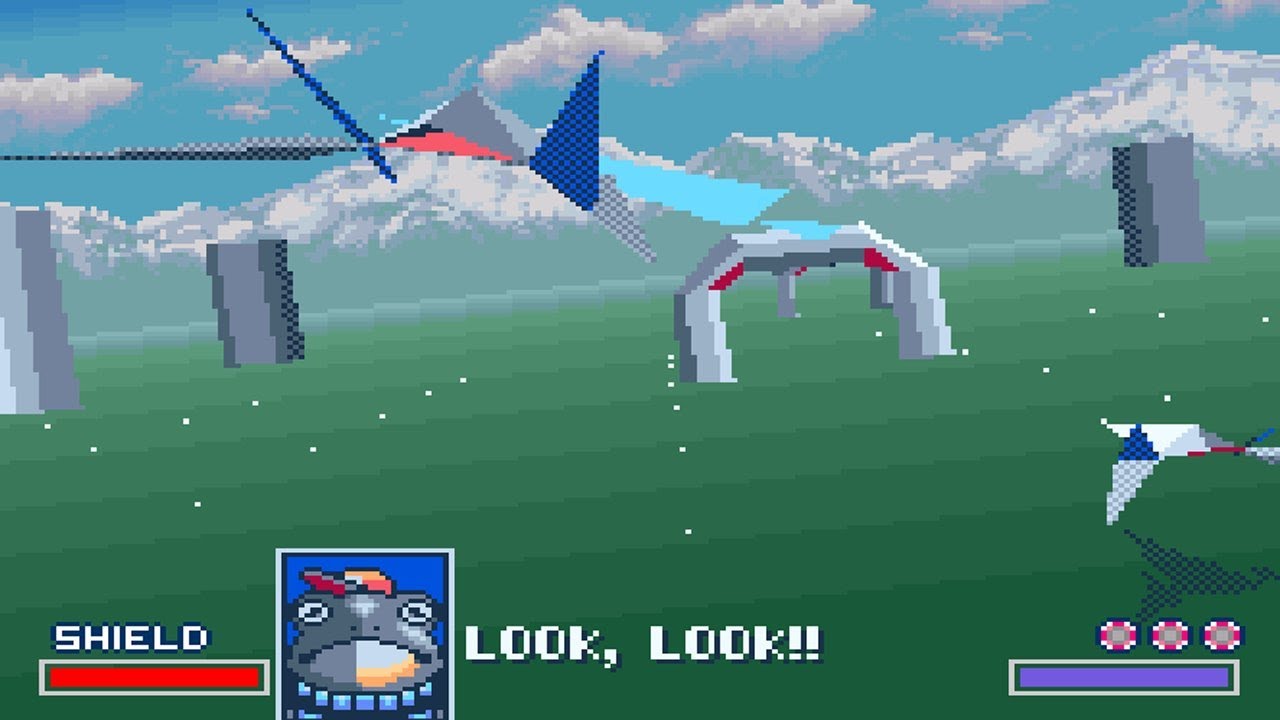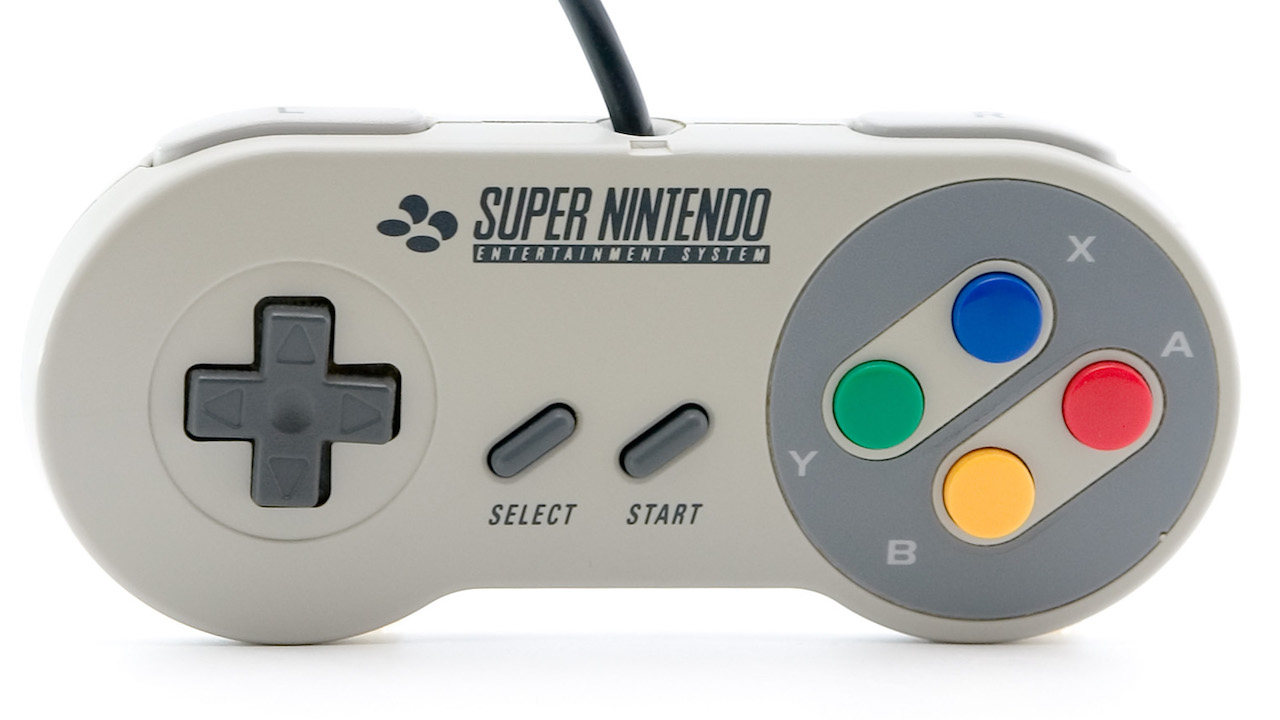Is the SNES the best games console of all time, ever?
Is the 16-bit Super Nintendo king of the consoles?

The Switch may be one of Nintendo's most important hardware launches yet thanks to the fact that the company's home and portable interests are now converging in a single platform.
We're celebrating 50 Years of Games in conjunction with the Golden Joystick Awards 2021, the world's biggest public-voted games awards show. This year's show will celebrate a milestone in gaming history, the release of Computer Space, the world's first commercial arcade machine in November 1971. And we'll be looking for your votes on the best console of all time (starting 3PM GMT, November 8) – will the SNES make the cut?
But that doesn't diminish the fact that Nintendo has released some of the most significant and influential pieces of gaming hardware ever, with the 16-bit Super Nintendo arguably being the most celebrated.
And with the SNES Mini and Nintendo Switch Online libraries reliving the console's glory days, now's the perfect time to take a trip down memory lane and take a look at what's got everyone so excited about the sprite-filled console all over again.
Read on for what made it earn such a special place in a generation of gamers' hearts.
A secretive start
With its first home console the NES, Nintendo practically reinvented the term "home gaming" after Atari's catastrophic mismanagement caused the video game crash in 1983. Nintendo's 8-bit system became a byword for gaming itself in North America, reinvigorating the sector and emboldening rivals such as Sega and NEC, both of whom attempted to muscle in with their 8 and 16-bit consoles.
Sega's Mega Drive – known in America as the Genesis – was the most successful, and by targeting players who had effectively outgrown the family-friendly NES, Sega was able to annex a large portion of the US market, placing Nintendo on the defensive.

To the casual observer, it seemed like Nintendo was old news. It was almost inevitable that company would follow the NES with a 16-bit successor, but it was equally keen to keep its current system alive for as long as possible, given its massive global install base.
Sign up for breaking news, reviews, opinion, top tech deals, and more.
As late as 1990 – more than a year after the Mega Drive made its Japanese debut – million-sellers like Super Mario Bros. 3 were still arriving at retail, so Nintendo's reluctance to retire its golden goose was understandable. However, that's not to say that the company was resting on its laurels; at the close of the '80s work was already taking place on what would become the Super Nintendo.
Gaming arms race
In stark contrast to the Nintendo of today which shies away from becoming involved in the costly technological arms race raging between Sony and Microsoft, the Japanese veteran decided to go all-out when it came to producing the successor to the NES – which, lest we forget, was already seven years old by the time 1990 arrived.
In addition to its 16-bit architecture the SNES featured powerful graphics co-processors that permitted smooth scaling and jaw-dropping rotating 3D effects, and these were put to good use in early games like Super Mario World, Pilotwings, Super Castlevania IV and F-Zero.

The console could display 256 colours on-screen simultaneously from a palette of 32,768 (the Mega Drive, its closest rival, could only muster 61 from a palette of 512) and boasted incredible 8-channel ADPCM audio thanks to its Sony-made sound hardware – designed by none other than Ken Kutaragi, the father of the PlayStation.
The console's only weakness from a technical perspective was its CPU, which was clocked at 3.58 MHz compared to the Mega Drive's Motorola 68000, which ran at 7.6 MHz. This meant that the SNES often struggled with intense scrolling shooters, but Nintendo's intention was to augment the CPU with special chips included in the game cartridges themselves, just as it had done with the NES.
This strategy led to the development of the Super FX chip with UK-based Argonaut Software, and the eventual release of 1993's Star Fox, one of the first home console titles to convincingly harness the power of 3D graphics.
Yakuza madness
The Japanese launch of the system took place on Wednesday November 21st 1990, under the name "Super Famicom", which was in keeping with the branding in that region (the NES was known as the "Family Computer" in Japan, or "Famicom" for short).
300,000 systems were sold within the space of a few hours, attracting the attention of the Yakuza (Nintendo moved stock at night to avoid robbery) and the Japanese government itself – it issued a demand shortly afterwards beseeching game hardware makers to launch their consoles at weekends to avoid any future disturbances.

The North American release in September of the following year was equally impressive, while poor old European players had to wait until April 1992 to get their hands on the new console. The design of the SNES was drastically altered for its American launch (see above), but mercifully the Euro release retained the attractive, rounded casing seen in Japan – along with that iconic four-color button cluster on the controller (US players had to make do with horrible purple and lilac buttons).
Gamepad perfection
Speaking of the controller, it came as something of a revelation after the boxy pad that shipped with the NES. Ergonomic and comfortable to use for prolonged periods, the SNES controller introduced two major innovations: a diamond arrangement for the main face buttons (something which all major consoles use these days) and shoulder buttons.

This six-button arrangement made the SNES the perfect platform for Capcom's conversion of Street Fighter II, arguably one of the biggest games of this period. A timed exclusive for the system, Street Fighter II wouldn't arrive on the Mega Drive until later on – and Sega was forced to release an (admittedly brilliant) six-button joypad so that players could experience it the way it was intended.

A lasting legacy
The SNES sold almost 50 million units during its lifespan thanks to sterling first-party releases from Nintendo such as Super Metroid, Super Mario Kart, Yoshi's Island, The Legend of Zelda: A Link to the Past and Super Punch-Out!!
But it was the system's robust third-party support which truly made it such an essential purchase during the 16-bit console war.
Some of the best games of the era were exclusive to the console, including Chrono Trigger, Super Ghouls 'n Ghosts, Contra III, Axelay, Secret of Mana and many more besides.
This rich and varied library of classic titles crafted by developers who were arguably at the peak of their creative powers are what makes the SNES such a beloved console even after all this time; while both the NES and Wii sold more units in total, this 16-bit powerhouse arguably has the superior lineup of software and it's not surprise that you voted it your favorite console of all time.
The definitive SNES games
Super Mario World
Without a doubt one of the best 2D platformers ever created, Super Mario World is remarkable; not only does it cram in more levels and variety than was ever thought possible in the genre, it boasts gorgeous cartoon visuals and a toe-tapping soundtrack. The most amazing thing is that it was a launch title for the console -- yet it was never bettered during the SNES' long lifespan -- and some would argue that it hasn't been topped since, either.
The Legend of Zelda: A Link to the Past
Link's first 16-bit adventure is a bit special; it takes the template laid down in the NES original and drastically increases the scope and scale of the quest. The visuals are still amazing even after all this time, while the gear-gated dungeons and expansive over world will keep you entertained for weeks on end. This is without a doubt one of the best adventure titles ever made.
Super Metroid
Another NES update, Super Metroid is cited as an influence on titles such as Castlevania: Symphony of the Night and (more recently) Axion Verge. It takes the platforming action seen in the first Metroid and adds a large game world to explore, more items to collect and plenty of fearsome bosses to contend with.
- Vote for your Ultimate Game of All Time and Best Gaming Hardware of All Time by visiting goldenjoysticks.com - voting ends on Nov 12.


